Meditative Yogic Breath & Body Practices: Tools for Transformation
By Nashalla G Nyinda Menpa TMD, MA Acu
In my last piece, Stop, Breathe and Embody… I introduced many concepts about breathing and the healing power of mindful breathing. The influence of ancient yogic principles clearing blockages in the channels stabilizes our meditation practice and its well-documented ability to relax the nervous system for anxiety. This has modern science in a buzz and increased the popularity of many non-secular meditative practices, such as Mindfulness-Based Stress Reduction, etc.
I have given live teachings where I have introduced some of the Western science behind how the breath interacts within our central nervous system. It can stimulate and increase the parasympathetic rest and digest phase, accompanying countless health benefits, including decreased inflammation, pain, and release from depression and anxiety.
Our breath, when linked to the mind-body practices found worldwide in traditional and indigenous cultures, is undoubtedly a tool of transformation. Let us dig deeper into some historical contexts behind yogic breath work and more advanced practices in Vajrayāna Buddhism.
What does Tibetan Yogic breathing have to do with our path to realization?
Once we move from basic calm abiding stable meditation, where the mind and breath are one, the space between intrusive thoughts is more expansive, the object of support (breath) is less hyperfocal, undertaking mediative concentration is less effortful, we are more open, relaxed, present. Naturally, we then move deeper into insight meditation.
This natural progression in our meditation practice allows an easeful transformation within our gross body. We develop more refined states of being, with purified aspects of clearing out ones, own mental and physical obscurations, distilling luminous reality which trickles down into the 84,000 subtle pathways and channels of the body.
Specifically, this means that when we do generation and completion stage practices, either with frontal or self-visualizations, we can develop a more clean experience into our own Buddha nature. Intrinsic bliss develops out of this process of certainty in our mediation. More constant connection within the mind-body union occurs with much greater ease. Breath and yogic practices with visualization are a natural part of this development in Vajrayāna Buddhism.
We develop the Vajra Body through the progress of visualization practices defined as generation and completion stage practice. Here, we practice letting go of the ordinary gross body with the “three faults” of rLung, mKhrispa, and Badkan. These “three faults” are often called the “three bodily humors” and are associated with pathophysiology in traditional Tibetan Medicine. Otherwise, very often translated as “wind,” “bile/fire,” and “earth & water/phlegm,” — these three have a direct association with the three root poisons we know so well as “attachment, anger, and ignorance.”
An authentic and present meditative experience of this kind of subtle body transformation can only begin when we settle the mind, experiencing integrated mind, breath, and body. Transforming and visualizing oneself, all beings as exemplarity and perfected deities take faith and clarity from the settled mind. A settled mind comes directly from breath and body union.
The practices we do in generating various deities also include reciting the mantra associated with whatever deity we have been developing a relationship with. This way, we have a union with body, mind, and speech.
During the practices associated with the generation and completion stage, tantric practitioners use yogic breath techniques and mental inner and outer visualization to develop a blissful presence based on non-thought. All of this is performed without attachment, thereby developing one’s awakening to their own Buddha nature. This is what we mean when we speak of the development of the Vajra Body in generation-stage mediation.
Vajra Body derives its meaning from what happens internally from Buddhist Vajrayana tantric teachings.
One aspect to understand in this definition of the Vajra (indestructible) body relates to a transformation we undergo as we purify the gross form through our meditative practices. This happens when breath and visualization unionize with a stable mind. The essence of generation stage practice development is where the gross human body is transformed into a refined and pure state. This becomes the indestructible (like a diamond) Vajra Body. This also refers to the body of an enlightened Buddha – the awakened one.
You often see references in numerous sutras or instructions to visualizing a deity, or oneself, with the 32 Major and 80 minor marks of a fully awakened, perfectly complete Buddha. The most important to understand here is the connection to our organs, which are healthy, unimpaired, and clear of disease and bodily constituent imbalances. In such a state, the five senses are directly associated with significant organ functions and, in perfected and clarified states, now operate with sharpness and precision. Meaning, we are experiencing our form as stainless as possible.
Naturally, this makes cognition sharper, sensation more vivid, clairvoyance and particular aspects often thought to be magical, or signs of accomplishment develop within us when this is accomplished over the long practice within meditative equipoise.
I often instruct in Medicine Buddha teachings about why we need to understand that the generation stage is not a made-up construct we simply imagine. Instead, through our minds’ stability, breath, and body in harmony, we can drop into a state of who we are. Clear, enlightened, and cognizant of our ability. From there, we operate generating in a state of the Vajra Body to help and assist all beings without concepts or bias.
This is why you too will hear descriptions of our need to visualize the faultless traits of the Buddha. This encourages the development of one’s own intrinsic explicit nature to shine. This is not something only Buddhas can experience!
Remember, the Buddha is not a god, as we may conceptualize such terms from other religious terminology. Buddha is an ordinary man, and through lifetimes of self-development, he worked to awaken his enlightened nature. He became the “Buddha” — an awake being with an enlightened body.
This also links us back to those pathophysiology connections to our three foundational root poisons, which directly obscure each human’s radiant Buddha nature.
Wiping the dust from the eyes:
Awaking Buddha Nature.
Being the “all victorious one” refers to transmuting the material components of “body” and “form” — concepts of our pathology linked to faulty mind states. The same mental states growing from ignorance’s primary root poison is trapping us in a form we experience as limiting. Human sense functions and perceptions can separate us from our enlightened state. Likewise, these same potions can be transmuted into wisdom states, setting us free and wiping the dust from our eyes. The perishable temporary human body is the essence of impermanence grasping at form. A Vajra Body state indicates we have transmuted into an indestructible state called the Dharmakāya, or “absolute body” and “truth/reality body.”
Dharmakāya is one of the three bodies (Trikāya) of a Buddha as defined in the Mahāyāna Buddhist tradition. Tantric practice develops over multiple stages, with specific transmission and instruction. Practitioners visualize and generate their bodies into the divine absolute. This generation-stage development of the subtle body is also reflected and defined as Vajra Body. It is a higher state of the body where the unity of all things and beings, un-manifested in the universe, are experienced without attachment or form beyond our conceptual mind. The Dharmakāya is the experience of “suchness” beyond existence or nonexistence.
Chögyam Trungpa Rinpoche called the Dharmakāya “The basis of the original unbornness.” This is what the actual generation of a Vajra Body entails. Tenzin Wangyal Rinpoche describes in Wonders of the Natural Mind: The Essence of Dzogchen in the Native Bon Tradition of Tibet (Snow Lion, 2000), “The Dharmakaya is the emptiness of the natural state of reality; the Sambhogakaya is the clarity of the natural state; the Nirmanakaya is the movement of energy that arises from the inseparability of emptiness and clarity.”
Body, Mind, Speech:
Breath as Vehicle: The Six Yogas of Naropa
Traditionally in three years, three months, and three days retreat, the meditative student is ready, having completed their preliminary practices, known as Ngöndro.
In all the sects or schools of Tibetan Buddhism, various preliminary practices are based on Mahāyāna principles that are not just a box to check off the list to move into tantric ritual but are specifically prescribed before beginning completion stage yoga practices. They lay a stable foundation fund to transform the subtle inner body. They clean the vessel, which we then use to transform into the absolute, or Vajra Body.
Such preliminary practices typically include turning one’s thoughts to the impermanent and transient nature of suffering in a human body, often called “turning ones mind to the dharma.”
Once you know there is freedom from suffering, you seek the tools to unify body, speech, and mind and cultivate the awakening and realization of your inner wisdom. This is done by typically taking refuge, cultivating the aspiration of bodhicitta, guru yoga, deity yoga, and dedication of merit. Ngöndro practices work directly on the pathophysiology of the three root poisons on all body, speech, and mental levels. Utilizing breathing practices assists in every aspect of Ngöndro.
The Six Yogas of Naropa are also called The Six Dharmas. These are a collection of tantric Buddhist completion stage practices drawn from the Buddhist tantras. They are intended to lead to Buddhahood in an accelerated manner. They traditionally require tantric initiation and personal instruction through working with a tantric guru and various preliminary practices. The six dharmas mainly work with the subtle body by generating inner heat (Tummo) energy.
Nāropa famously learned the six dharmas from his teacher Tilopa. Nāropa’s student Marpa taught the famous yogi Milarepa. Milarepa taught his student Gampopa, whose meditation manuals covering the six dharmas are collected in the Dakpö Kambum. These writings then served as the basis for Gampopa to the various Kagyu schools and lineages, which carry these teachings in an unbroken lineage.
The Kagyu and Gelug schools commonly practice the six yogis or six dharmas, initiation or empowerment into at least one Anuttarayogatantra system. Anuttarayogatantra translates as the Highest Yoga Tantra or Unexcelled Yoga Tantra. These are esoteric tantric Indian Buddhist texts which are part of the Kangyur or the ‘Translated Words of the Buddha’ within the Tibetan Buddhist canon. The Practice of its Generation Stage is the bases for the practice of the six dharmas.
The Six Dharmas:
- Tummo ག”མ་མོ་ Inner heat yoga
- Ösel འོད་གསལ་ clear light, radiance, or luminosity yoga
- Milam རྨི་ལམ་ Dream state yoga
- Gyulü སྒྱུ་ལུས་ Illusory body yoga
- Bardo བར་དོ་ Intermediate state yoga
- Phowa: འཕོ་བ་ Transference of consciousness
To these six primary dharmas practiced in a three-year retreat, there are Other dharmas, sometimes grouped with the six dharmas are supplementary practices. The most famous is Karmamudrā, a union of one’s male and female aspects and wisdom, performed physically or visually, which cannot be done without first accomplishing the first yoga, Tummo, inner heat yoga, and generation-stage practice. Likewise, this is true of the transfer of mindstream into a recently deceased body and self-liberation.
This leads us back to the need to develop mind, body, and breath stabilization. Not only to perform the essential preliminaries but also to hold a stable mind, develop purification of the
inner body, and prepare the 84,000 channels for transformation practices like inner heat yoga. Each of these requires a harmonious mind-body connection and development of the Vajra Body. Breath is the transformation tool in all these aspects of basic and advanced Buddhist practice.
We begin with breath, and breath sustains and transforms us. To breathe is to awaken freedom.
May All Beings Benefit!
Join Dr. Nashalla Nyinda in 2023!
About the Author




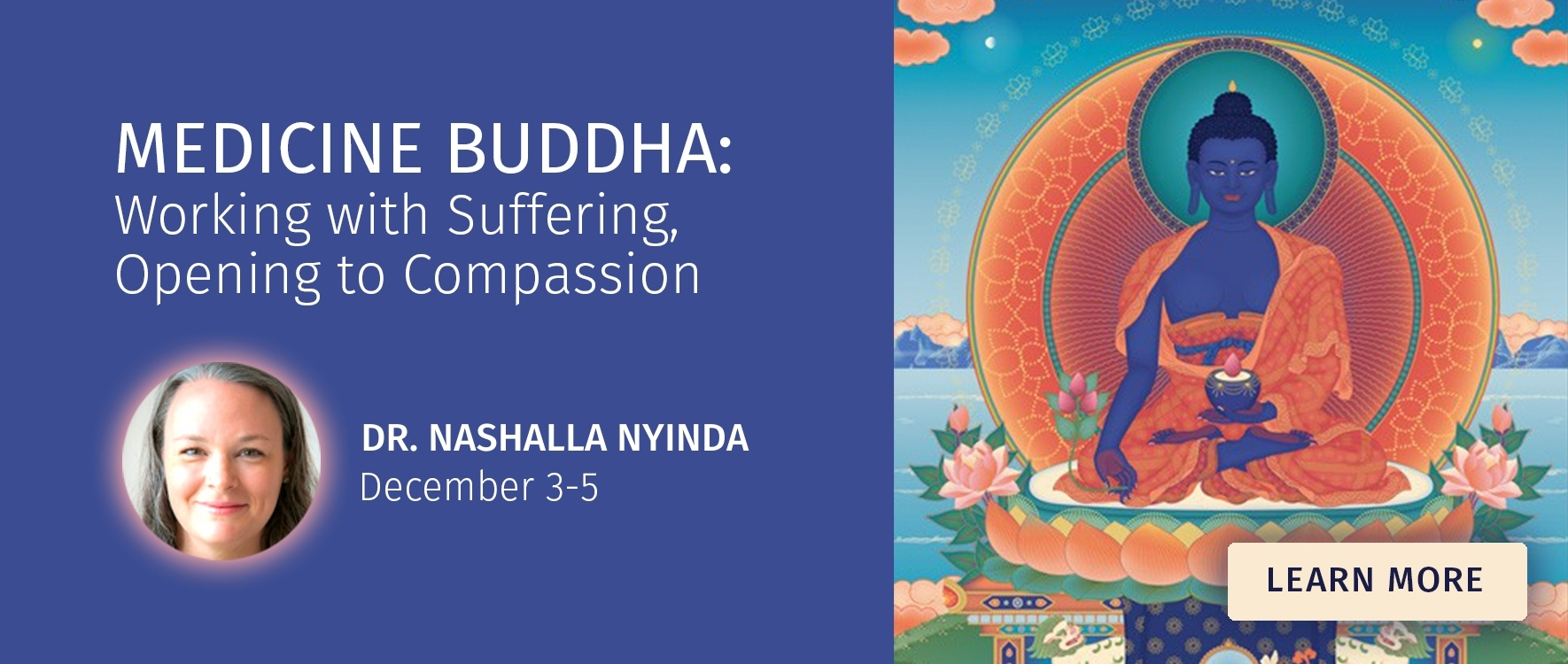
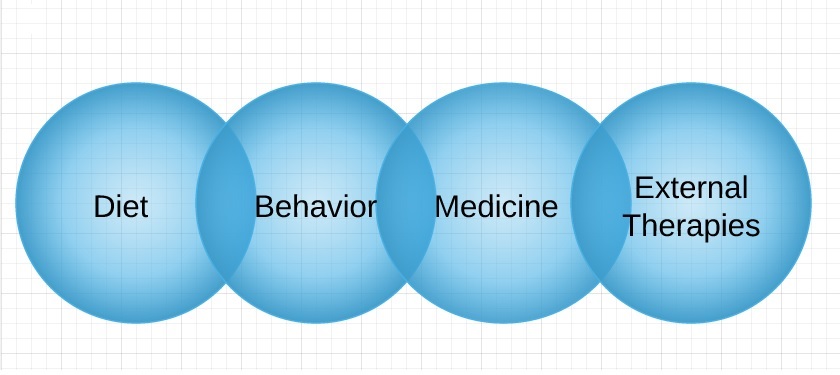
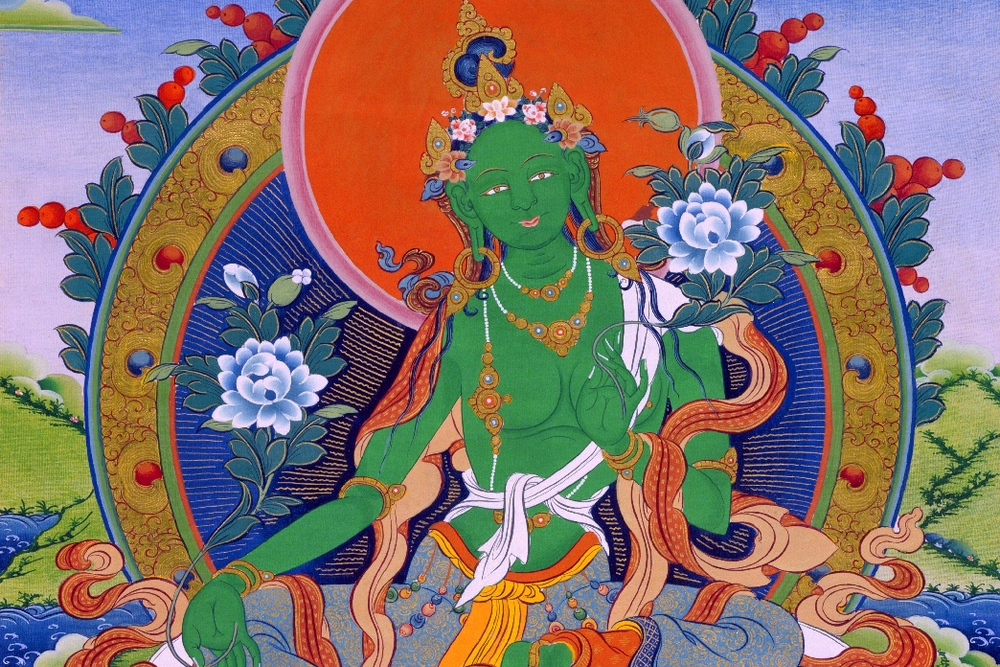
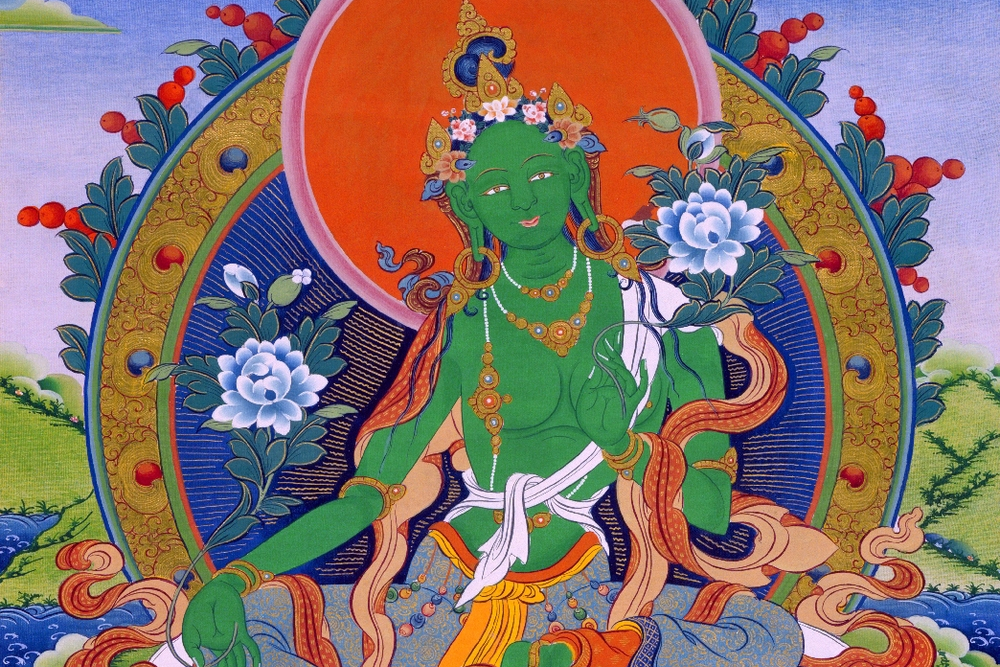
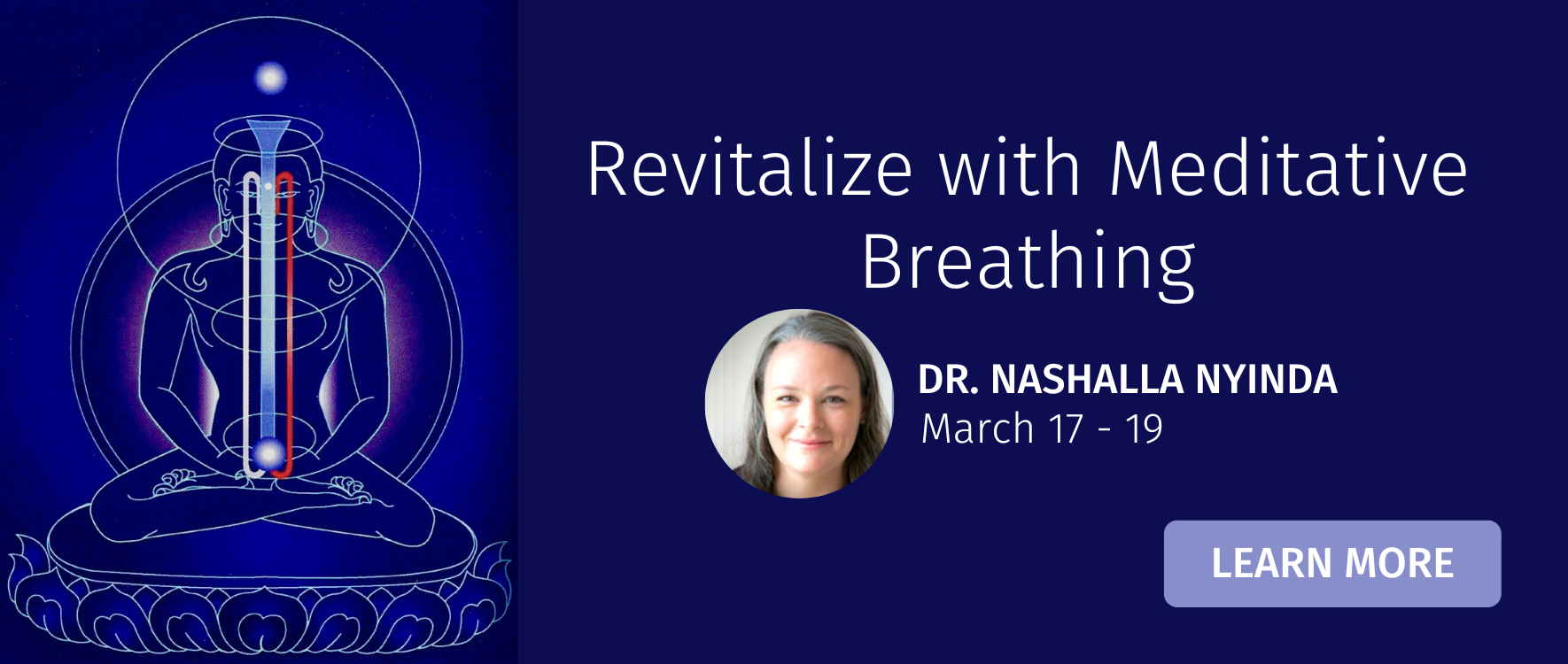
Want to know about beginners practices of transforming ordinary body and mind into vajra body and vajra chitta